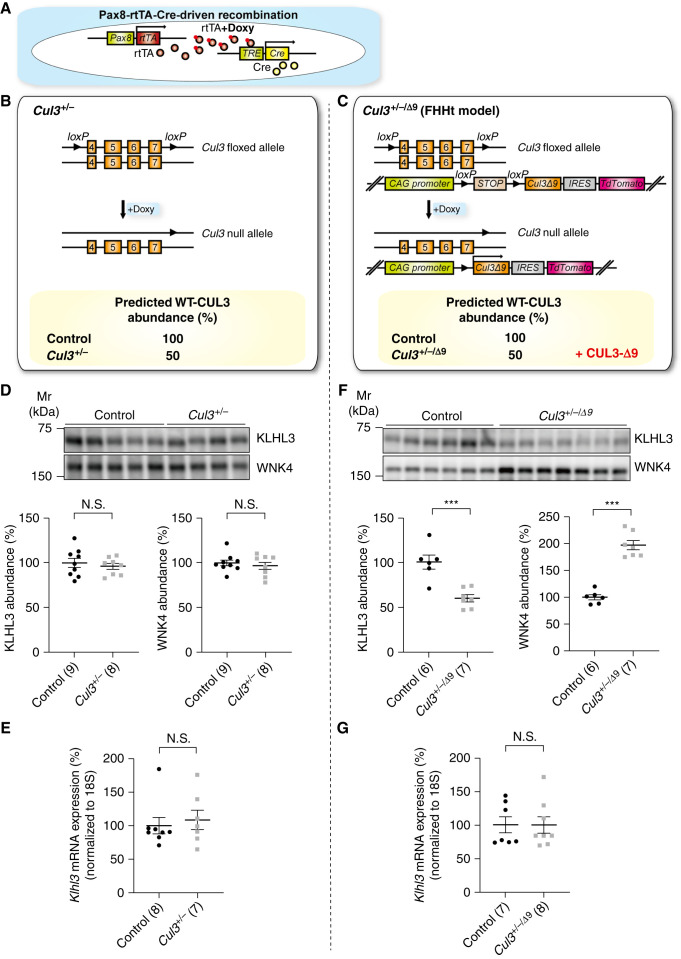Figure 2.
KLHL3 is reduced in a model of FHHt. (A) The Pax8-rtTA-LC1 system (present in all mice) was used for doxycycline-induced Cre-mediated recombination at loxP sites specifically in renal epithelia. (B) In addition to Pax8-rtTA-LC1, Cul3+/− mice carried “floxed” exons 4–7 and doxycycline treatment induced recombination, disrupting one allele and predicted to reduce CUL3 expression to about 50%. (C) Cul3+/−/Δ9 mice, a model of FHHt,22 were the same as Cul3+/− mice but also carried a transgene fragment consisting of a strong synthetic promoter (CAG) promoter, a floxed transcription blocker (STOP), cDNA encoding Cul3 Δ403–459 (CUL3-Δ9), an internal ribosome entry site (IRES), and cDNA encoding the fluorophore tdTomato. After induction by doxycycline, in addition to inactivation of one Cul3 allele, the IRES permitted translation of CUL3-Δ9 and tdTomato separately from the same transcript. Control mice were genetically identical to either Cul3+/− or Cul3+/−/Δ9 mice and were given vehicle only. (D) Abundances of WNK4 and KLHL3 did not differ between controls and Cul3+/− mice. (E) Quantitative real-time PCR showed that Klhl3 mRNA did not differ between controls and Cul3+/− mice. (F) Cul3+/−/Δ9 mice displayed significantly lower protein KLHL3 protein abundance and WNK4 abundance compared with control mice. (G) Klhl3 mRNA expression was not significantly different from control mice in Cul3+/−/Δ9. Individual values and mean±SEM are shown, with n in parentheses. Statistical differences were determined by two-tailed unpaired t tests. ***P<0.001; N.S., P>0.05.

